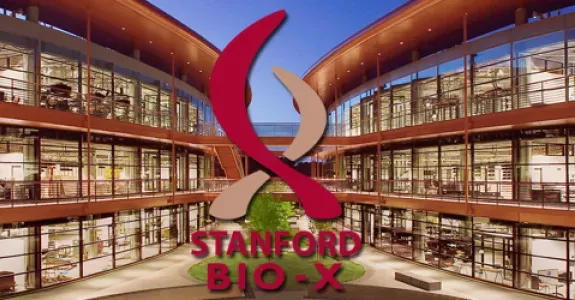
Welcome to the biweekly electronic newsletter from Stanford Bio-X for members of the Bio-X Corporate Forum. Please contact Dr. Hanwei Li, the Bio-X Corporate Forum Liaison if you would like to be added or removed from this distribution list, or if you have any questions about Stanford Bio-X or Stanford University.
Highlights
** On October 9, 2013, Bio-X celebrated the 10th Anniversary of the James H. Clark Center, the hub of Bio-X. Check out CLARK CENTER @ 10X as well as the Bio-X Timeline over the last 15 years!!
** Check out the article by Stanford President John Hennessy in the Nov/Dec 2013 issue of the Stanford Magazine on Bio-X and the Clark Center, "A Cauldron of Innovation".
Bio-X Core Programs
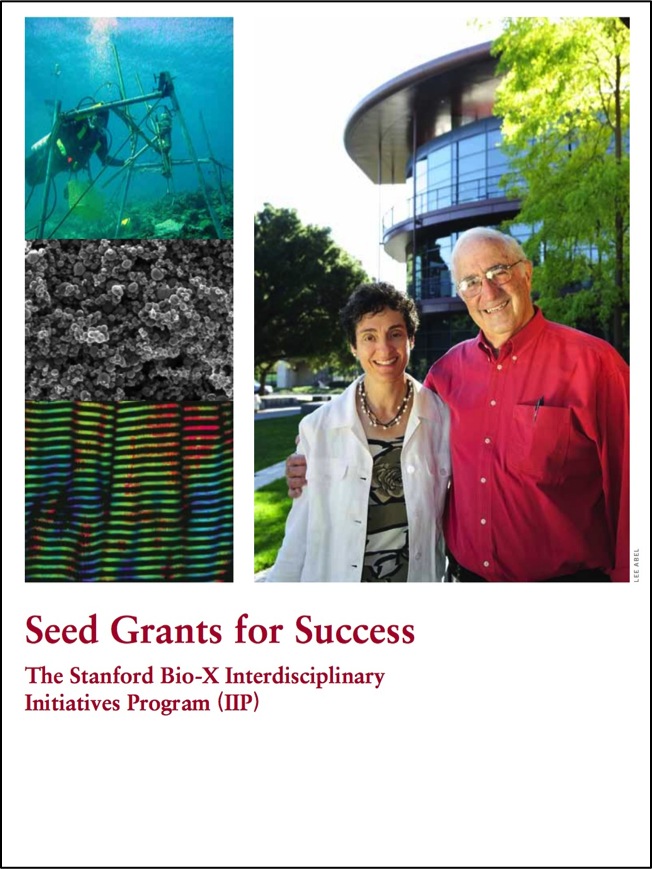 SEED GRANTS FOR SUCCESS - Stanford Bio-X Interdisciplinary Initiatives Program (IIP) SEED GRANTS FOR SUCCESS - Stanford Bio-X Interdisciplinary Initiatives Program (IIP)The Bio-X Interdisciplinary Initiatives Program represents a key Stanford Initiative to address challenges in human health. Currently, the IIP awards approximately $4 million every other year in the form of two-year grants averaging about $200,000 each. From its inception in 2000 through the beginning of the seventh round in 2014, the program has provided critical early-stage funding to 164 different interdisciplinary projects, involving collaborations from over 750 faculty members, and creating over 700 teams from six different Stanford schools. From just the first 6 rounds, the IIP awards have resulted in a 10-fold-plus return on investment, as well as hundreds of publications, dozens of patents filed, and most importantly, the acceleration of scientific discovery and innovation. 2014 is the start of the 7th round of the Bio-X IIP Seed Grants Program, and 22 newly awarded projects were selected from 142 Letters of Intent (LOIs)! This has been the largest number of LOIs that Bio-X has received. Please go here to check out the newly awarded projects. Competition was intense, and the selection criteria included innovation, high-reward, and new interdisciplinary collaborations. (To view the 142 other IIP projects that have been funded from the previous 6 rounds, please click here.) |
 Bio-X FELLOWSHIPS Bio-X FELLOWSHIPSEvery year, graduate students and postdoctoral scholars of Bio-X affiliated faculty are highly encouraged to apply for the Bio-X Fellowships, which are awarded to research projects that are interdisciplinary and utilize the technologies of different fields to solve different biological questions. Students are encouraged to work collaboratively with professors of different departments, thus creating cross-disciplinary relationships among the different Stanford schools. Our fellows have conducted exciting research, resulting in publications in high-impact journals and have been offered excellent positions in industry and academia. To date, with the 19 new awardees of 2014, Stanford Bio-X has a total of 173 Fellows. The call for 2015's PhD Fellowship program has just closed and review of the applications is beginning! You can view the numerous Fellowship projects that have been awarded over the years as well as oral presentations from previous symposiums here. |
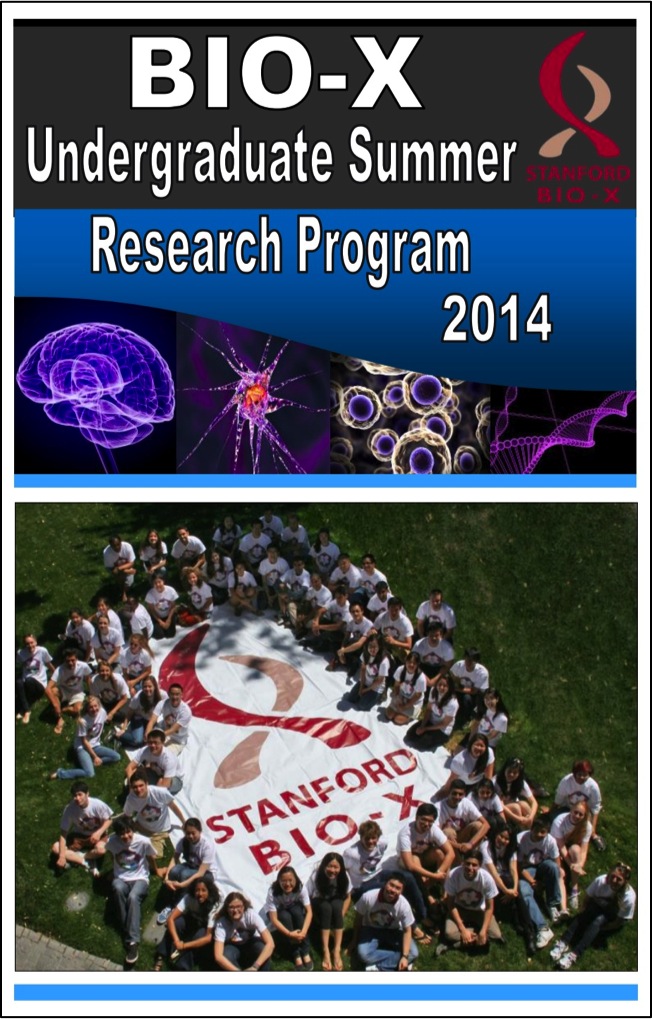 Bio-X UNDERGRADUATE SUMMER RESEARCH PROGRAM Bio-X UNDERGRADUATE SUMMER RESEARCH PROGRAMThe Bio-X Undergraduate Summer Research Program supports undergraduate research training through an award designed to support interdisciplinary undergraduate summer research projects. The program is an invaluable opportunity for students to conduct hands-on research, learn how to carry out experiments in the laboratory, and develop the skills to read and analyze scientific literature. This program is eligible to Stanford students who want to work in the labs of Bio-X affiliated faculty. To date, with 65 new awardees from the 154 applications submitted in 2014, 306 students have been awarded the opportunity to participate in the Bio-X Undergraduate Summer Research Program. The call for 2015's USRP has just closed and review is underway! Participating undergraduates are also required to present poster presentations on the research that they've conducted during the program. Please click here for title lists of past posters that our undergraduates have presented. |
We are cultivating and are highly successful in building meaningful collaborations with numerous corporate colleagues. New collaborations through our core programs are highly encouraged. To learn about how to get involved, please contact Dr. Hanwei Li, or Dr. Heideh Fattaey.
Bio-X also holds symposiums every year that highlight our core programs. The latest one was on February 25, 2015, where over 300 people attended Bio-X's latest Interdisciplinary Initiatives Seed Grants Program Symposium. There were 8 different oral presentations from faculty members who were awarded Bio-X Seed Grants on the progress that they have made with the funding towards their projects, as well as a packed poster session with 100+ research projects presented. Please stay tuned for future Bio-X symposiums that are coming up this year!
If you'd like to learn more about any of the projects that were presented during the entire symposium, please contact Dr. Hanwei Li with your questions.
News
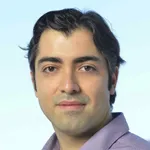
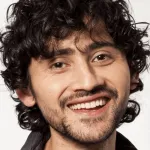
 Five faculty members receive NSF Early Career Development Awards
Five faculty members receive NSF Early Career Development Awards
Five Stanford Engineering faculty members (including 3 that are affiliated with Stanford Bio-X) have received National Science Foundation Early Career Development (CAREER) awards for 2015. The CAREER program helps promising junior faculty pursue outstanding research while also improving education. Winners are: Amin Arbabian, Michael Lepech, Marco Pavone, Manu Prakash, and Sindy Tang.

Global collaboration leads to discovery of insulin-resistance mutation
Bio-X Affiliated Faculty Tom Quertermous
Medicine Faculty Joshua Knowles
In the four decades since Stanford’s Gerald Reaven, MD, helped demonstrate that insulin resistance can lead to type 2 diabetes, researchers have been hunting for the genetic triggers of the condition. Now, an international team spearheaded by researchers at the Stanford University School of Medicine has discovered a gene that, when mutated, increases insulin resistance. A paper describing the findings was published online March 23 in the Journal of Clinical Investigation. Insulin resistance affects nearly one-third of the U.S. population and occurs when the body’s tissues become less responsive to insulin’s command to gobble glucose. This disconnect increases the likelihood of diabetes, heart disease, hypertension and a variety of other health problems. “It’s been a long road, but it’s exciting,” said senior author Thomas Quertermous, MD, the William G. Irwin Professor in Cardiovascular Medicine. “Insulin resistance is probably the No. 1 risk factor for complex human disease.” The team associated a mutation in a gene called NAT2 with insulin resistance by matching its prevalence in the genomes of 5,624 individuals with their scores on a test of insulin sensitivity. The results were then confirmed using genetic studies in mice. NAT2 is expressed in the liver and intestine and known previously for its involvement in drug processing.

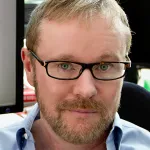 Researchers identify 'bridge' state necessary for cellular reprogramming
Researchers identify 'bridge' state necessary for cellular reprogramming
Bio-X Affiliated Faculty Marius Wernig
Bio-X Affiliated Faculty Garry Nolan
The discovery that fully mature cells can be reprogrammed to what are known as induced pluripotent stem cells by exposure to just a few proteins shocked the scientific world in 2006 and led to an explosion in stem cell research. But the exact molecular steps responsible for reprogramming the cells to become pluripotent — to have the potential to become any cell in the body — have remained murky. Now researchers in the laboratory of Marius Wernig, MD, have shown that cells enter a previously unknown transition state identified by unique cell surface markers during their transition to pluripotency. “This was completely unexpected,” said Wernig, associate professor of pathology at the School of Medicine and a member of the Stanford Institute for Stem Cell Biology and Regenerative Medicine. “It’s always been assumed that reprogramming is simply a matter of pushing mature cells backward along the developmental pathway. These cells would undergo two major changes: They’d turn off genes corresponding to their original identity, and begin to express pluripotency genes. Now we know there’s an intermediary state we’d never imagined before.” The research was published in the April 1 issue of Nature. Wernig is the senior author of the research; graduate student Ernesto Lujan and postdoctoral scholar Eli Zunder, PhD, are the lead authors. The researchers collaborated with others in the laboratory of Garry Nolan, PhD, professor of microbiology and immunology, to conduct the study. They used a technique developed in the Nolan lab called single-cell mass cytometry to analyze the expression of cell surface molecules on individual cells during the reprogramming process, and they grew individual cells separately in 96-well plates to ensure they were observing the orderly progression of events from just one ancestor cell.
 Scientists unveil sex-linked control of genes
Scientists unveil sex-linked control of genes
Bio-X Affiliated Faculty Howard Chang
Garfield has a dark secret. The cartoon cat is a genetic anomaly, not because of his insatiable lasagna cravings, but because of his coat color. Outside the world of the Sunday comics, orange and black cats are almost invariably female. This truism is due to a curious biological phenomenon called X inactivation, which ensures that females of all species have only one active X chromosome in every cell. Early in development, when embryos have just few cells, one X chromosome is shut down or silenced in each cell. This chromosome remains inactive in all of that cell’s progeny throughout the life of the animal. ... X inactivation is necessary to ensure that females, who have two X chromosomes, and males, who have only one, end up with roughly the same dosage of genes that occur on that chromosome. ... Scientists have known about X inactivation for decades. Recently they learned that an RNA molecule called Xist is responsible. But it’s not been at clear exactly how Xist works to silence genes on the X chromosome. Now researchers at the Stanford University School of Medicine have outlined the molecular steps of inactivation, showing that it occurs in an orderly and directed fashion as early embryonic cells begin to differentiate into more specialized tissues. They’ve identified more than 80 proteins in mouse cells that bind to Xist to help it do its job. They hope their findings will shed light on conditions in humans that are typically more severe in one gender than the other.
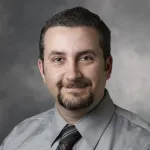 New way to sort cells without limitations of traditional methods
New way to sort cells without limitations of traditional methods
Bio-X Affiliated Faculty Ash Alizadeh
A team of Stanford University School of Medicine researchers has come up with a new way of analyzing individual cell types by applying advanced mathematical analysis to the cells’ contents. The method is analogous to analyzing a smoothie to find what fruits went into making it, the researchers say. A paper describing the method, called Cibersort, was published online March 30 in Nature Methods. Analyzing and sorting individual cells according to the proteins they display on their surfaces is an essential part of stem cell science and cancer research. By analyzing these proteins, known as cell surface markers, scientists can figure out what kind of cells they are dealing with and see how the cell samples, taken from an animal over a period of time, change. With cancer, the presence or absence of certain cell markers can make a huge difference in a patient’s prognosis and what treatments will be most effective. But many kinds of tissue can’t be analyzed easily or accurately using current methods of cell sorting, hampering scientists’ ability to do research and clinicians’ ability to find the most effective therapies for cancer and other diseases. “The basic problem is that we often want to count cell populations in tissues, but we rely on methods that require tissues to be collected and stored, then separated into individual cells or sliced into sections, and then labeled with antibodies to specific markers,” said Ash Alizadeh, MD, PhD, assistant professor of medicine and the senior author of the paper. “Each of these steps has limitations.”
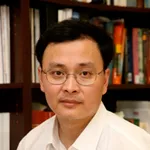 Aluminum battery from Stanford offers safe alternative to conventional batteries
Aluminum battery from Stanford offers safe alternative to conventional batteries
Bio-X Affiliated Faculty Hongjie Dai
Stanford University scientists have invented the first high-performance aluminum battery that's fast-charging, long-lasting and inexpensive. Researchers say the new technology offers a safe alternative to many commercial batteries in wide use today. "We have developed a rechargeable aluminum battery that may replace existing storage devices, such as alkaline batteries, which are bad for the environment, and lithium-ion batteries, which occasionally burst into flames," said Hongjie Dai, a professor of chemistry at Stanford. "Our new battery won't catch fire, even if you drill through it." Dai and his colleagues describe their novel aluminum-ion battery in "An ultrafast rechargeable aluminum-ion battery," which will be published in the April 6 advance online edition of the journal Nature. Aluminum has long been an attractive material for batteries, mainly because of its low cost, low flammability and high-charge storage capacity. For decades, researchers have tried unsuccessfully to develop a commercially viable aluminum-ion battery. A key challenge has been finding materials capable of producing sufficient voltage after repeated cycles of charging and discharging.
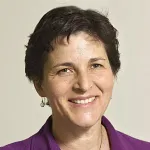 Ants' intruder defense strategy could lead to better email spam filters, Stanford biologist finds
Ants' intruder defense strategy could lead to better email spam filters, Stanford biologist finds
Bio-X Affiliated Faculty Deborah Gordon
To kill spam, email filters might need to act a bit more like ants. Deborah M. Gordon, a biology professor at Stanford, has worked with a computer scientist, Fernando Esponda, and produced a model that suggests that ant colony defense behavior follows the same distributed network rules as the human immune system. The work suggests that evolution has twice produced a simple security protocol for social insects that, installed in email servers, could make them far more difficult for spammers to hack. The results are published in the journal The Royal Society Proceedings B. Immune cells in vertebrate animals use specialized surface molecules to recognize pathogens. These molecules are incredibly specific, usually corresponding only to one or two bacterium or virus strains. It would be terribly unwieldy for the cell to carry a molecule that matches every existing pathogen, so immune cells typically hunt only one type of intruder. It's fine if a bug gets past one immune cell – the system knows it will inevitably spot the intruder. This approach is known as a distributed decision network. Ants, it turns out, use a similar strategy to keep intruders from their nest, Gordon and coauthor Esponda, a computer scientist at the Instituto Tecnologico Autonomo de Mexico, write in their new paper.
Hidden enemy: Emerging form of poliovirus threatens hopes for eradication
Pediatrics (Infectious Diseases) Faculty Yvonne Maldonado
Polio is about to be eradicated. By 2018, if all goes according to the World Health Organization’s plans, the last diagnosis of paralytic polio would mark the end of the devastating, potentially fatal illness. Although that goal appears tantalizingly close, several formidable obstacles to reaching it remain. Poverty, inadequate health services, political instability and distrust of Western-led vaccination campaigns persist in Pakistan, Afghanistan and Nigeria, the three countries where polio remains entrenched. But beyond the geopolitical hurdles, polio fighters also face an unprecedented scientific challenge: the danger of circulating vaccine-derived polioviruses, which originate from one of the two vaccines used against the illness. First recognized in 2000, the viruses are garnering increased attention from researchers as they threaten to overtake wild poliovirus as the most prominent source of the paralytic disease. Several scientists, including Yvonne Maldonado, MD, professor of pediatrics and of health research and policy at the School of Medicine, are studying how to tackle this problem. Maldonado is also chief of infectious diseases at Lucile Packard Children’s Hospital Stanford. Circulating vaccine-derived polioviruses are “the biggest surprise” that scientists have encountered in their work to end polio, said Walter Orenstein, MD, lead author of a 2014 clinical report about polio eradication from the American Academy of Pediatrics and a professor of medicine at Emory University. The viruses “are genotypically vaccine, but phenotypically wild virus,” Orenstein explained; in other words, they look genetically like the vaccine, but behave in nature like their wild counterparts.
Events
| Bio-X April 9, 2015, 12 pm - 1:05 pm Clark Center S360, Stanford, CA Frontiers in Interdisciplinary Biosciences Seminar: "Molecular mechanisms in the assembly of a presynaptic inhibitory microcircuit" Speaker: Julia Kaltschmidt, PhD, Memorial Sloan Kettering Cancer Center |
Molecular Imaging Program at Stanford (MIPS) April 9, 2015, 5:30 pm - 6:30 pm Beckman Building, Munzer Auditorium, Stanford, CA CCNE Nano-Bio Seminar Series: "Integrated Fluidic System for Analysis of Circulating Tumor Cells: Searching for Drug-induced DNA Damage using Nanosensors" Speaker: Steven A. Soper, PhD, UNC |
| Developmental Biology April 15, 2015, 4 pm - 5 pm Clark Center Auditorium, Stanford, CA Frontiers in Biology: "Integrating signaling with metabolism during embryo patterning" Speaker: Olivier Pourquie, PhD, Harvard |
Pediatrics April 16, 2015, 3 pm - 4 pm Beckman Center, Munzer Auditorium, Stanford, CA Frontiers in Gene & Molecular Therapy: "Inside stories of adeno-associated virus vectors: working towards molecularly-programmed artificially-intelligent AAV vector genomes" Speaker: Guangping Gao, PhD, Univ of Massachusetts |
Resources
| Stanford University |
| Stanford Bio-X |
| Bio-X Seed Grants The Stanford Bio-X Interdisciplinary Initiatives Program (IIP) provides seed funding for high-risk, high-reward, collaborative projects across the university, and have been highly successful in fostering transformative research. |
| Office of Technology and Licensing "Techfinder" Search the OTL Technology Portal to find technologies available for licensing from Stanford. |
| Stanford Center for Professional Development - Take advantage of your FREE membership! - Take online graduate courses in engineering, leadership and management, bioscience, and more. - Register for free webinars and seminars, and gets discounts on courses. |
| Stanford Biodesign Video Tutorials on how FDA approves medical devices A series of video briefs recently produced by the Stanford Biodesign Program teaches innovators how to get a medical device approved for use in the United States. This free, online library of 60 videos provides detailed information on the Food and Drug Administration regulatory process, short case studies and advice on interacting with the FDA. |
To learn more about Stanford Bio-X or Stanford University, please contact Dr. Hanwei Li, the Bio-X Corporate Forum Liaison, at 650-725-1523 or lhanwei1@stanford.edu, or Dr. Heideh Fattaey, the Executive Director of Bio-X Operations and Programs, at 650-799-1608 or hfattaey@stanford.edu.
